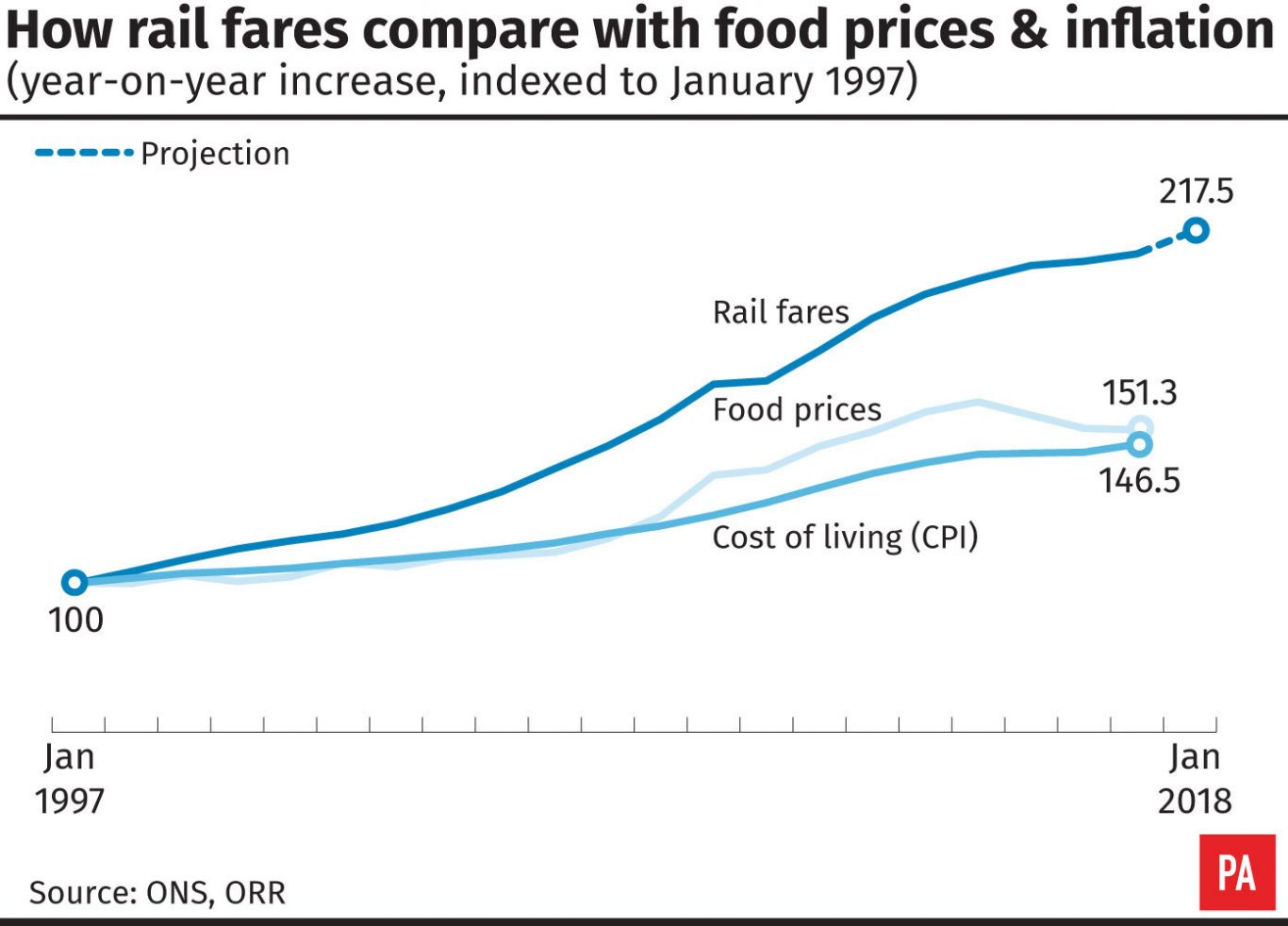RAIL passengers travelling on the first working day of 2018 are being hit with the largest fare rise in five years.
Average ticket prices across Britain went up by 3.4% on Tuesday.
Protests were held outside around 40 stations to mark the biggest increase since 2013.
Members of the Rail, Maritime and Transport (RMT) union handed out chocolates to “sweeten the bitter pill” of the price increase.
Paul Plummer, chief executive of the Rail Delivery Group which represents train operators, said “nobody wants to see fares going up” but insisted the increase is necessary to improve the network.
He told the Press Association: “All we can do is make sure we invest to improve as fast as we possibly can.
“We’ve had decades of under-investment which we are now addressing and have been consistently over the last few years, but it takes time. We need that money from fares to be able to afford that investment.”
Protests in Scotland
Protests at Scottish rail stations are set to take place on Wednesday 3rd January
Edinburgh 16.00-18.00
Glasgow – Time to be confirmed
Dunbar 08.00-10.00
North Berwick 08.00-10.00
Inverkeithing/Dunfermline/Kirkcaldy 06.30-08.30
Many season tickets have gone up by more than £100, including in Prime Minister Theresa May’s constituency of Maidenhead, where an annual pass to London rose by £104 to £3,092.
Other commuter routes that are now more expensive include Liverpool to Manchester (up £108 to £3,152), Neath to Cardiff (up £56 to £1,708) and Elgin to Inverness (up £100 to £2,904).
Stephen Joseph, chief executive of the Campaign for Better Transport (CBT), accused the Government of choosing to “snub rail passengers” by continuing to increase fares while fuel duty is frozen for a seventh consecutive year.
CBT figures show that average season tickets into London terminals have gone up by £146 this year, compared with £74 last January.
Mr Joseph said: “The extra money that season ticket-holders will have to fork out this year is almost as much as drivers will save.
“That doesn’t seem fair to us or the millions of people who commute by train, especially as wages continue to stagnate. What’s good enough for motorists should be good enough for rail passengers.”
We called for a #faresfreeze to help struggling commuters, but the Government chose to snub passengers and only freeze fuel duty. Today, season ticket holders will have had to fork out more for their tickets whilst drivers save money. That doesn’t seem fair to us pic.twitter.com/9LUgYpLoTJ
— Campaign for Better Transport (@CBTransport) January 2, 2018
These are around half of all tickets and include season tickets on most commuter routes.
Train operating companies set the prices of other tickets but are bound by competition rules.
Bruce Williamson, of campaign group Railfuture, warned that “people are being priced out of getting to work”.
He called for the Consumer Price Index (CPI) inflation measure to be used for regulated fare increases.
It is normally lower than RPI and is used by the Government to set increases in benefits and pensions.
Mr Williamson said: “If CPI had been used instead of RPI since 2004, then rail fares would be 17% lower, a significant amount of money for season ticket holders who are spending thousands of pounds to get to work.
“It’s no wonder that poor value for money is the number one concern of rail travellers, with British rail fares amongst the most expensive in Europe.”
Rail fares are going up 3.4% in January. Here's what Railfuture had to say on talkRADIO this morning: https://t.co/JMFP7iaYF1
— Railfuture (@Railfuture) December 5, 2017
“This includes the first trains running though London on the Crossrail project, an entirely new Thameslink rail service and continuing work on the transformative Great North Rail Project.
“We keep fare prices under constant review and the price rises for this year are capped in line with inflation, with 97p out of every £1 paid going back into the railway.”

Enjoy the convenience of having The Sunday Post delivered as a digital ePaper straight to your smartphone, tablet or computer.
Subscribe for only £5.49 a month and enjoy all the benefits of the printed paper as a digital replica.
Subscribe

